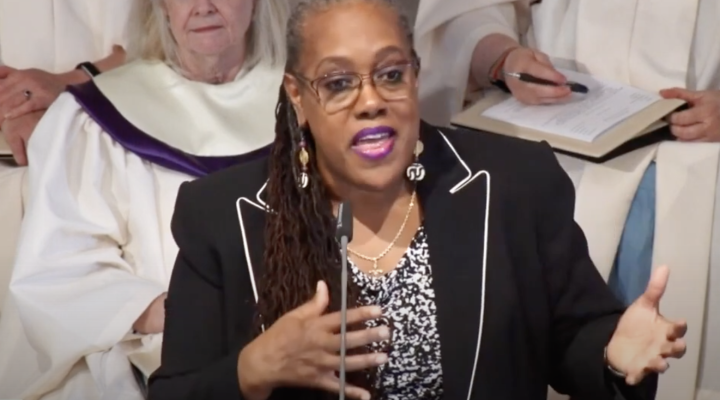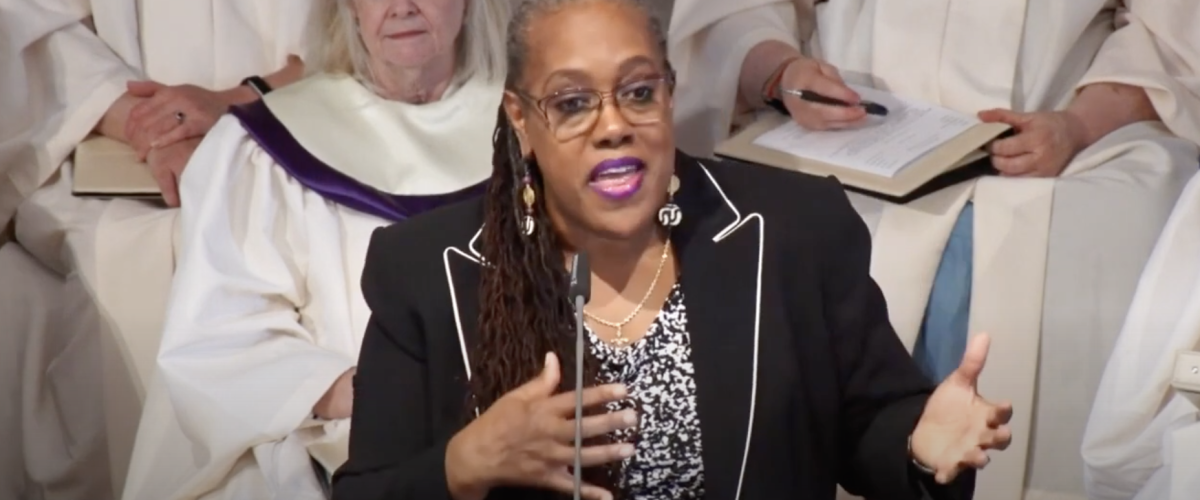Women in ministry continue to feel blocked in their callings and ignored in their ministry settings because they are female, according to an annual report released June 21 by Baptist Women in Ministry.
“The State of Women in Baptist Life,” which surveyed 555 female ministers from October to December 2021, found 86% of respondents “feel obstacles due to gender” and 59% “said they are overlooked and silenced in their ministry settings.”
The survey also reported that 63% of Baptist women in ministry said they “have to fight for a seat at the table” in their roles, and 25% said “yes” when asked if they had experienced sexual assault, harassment or misconduct in their ministry settings.
 “Some victims feel ashamed and fear being silenced, not believed, or even blamed. Many victims have a difficult time labeling their experience as harassment or assault and find it easier to act as if it never happened,” the report explains. “Even though the BWIM survey was anonymous, it is likely that the real number of affected women is higher.”
“Some victims feel ashamed and fear being silenced, not believed, or even blamed. Many victims have a difficult time labeling their experience as harassment or assault and find it easier to act as if it never happened,” the report explains. “Even though the BWIM survey was anonymous, it is likely that the real number of affected women is higher.”
But the survey also documented supportive and positive experiences for women in ministry, as well as advances they have made overall.
“When compared to the data in 2015, this 2021 report definitively shows that Baptists continue to make progress for women in ministry in almost all areas,” it states. “Even with the sharp decline of ordinations during the pandemic, the yearly average of women ordained from 2016 to 2021 increased from the average in the previous report. The number of female pastors and co-pastors increased from 2015, and all denominational groups had a larger percentage of women serving in the highest levels of pastoral ministry.”
Number of ordained women growing
BWIM said its tally of ordained women ministers rose from 2,433 in 2016 to 2,722 last year.
“From 2016 to 2021, Texas (57), North Carolina (51), Georgia (47) and Virginia (36) hosted the majority of women’s ordinations. These states had the largest number of ordinations in past reports as well. The correlation is most likely due to the Baptist-affiliated seminaries located in each of these states, as students frequently seek ordination during or shortly after their time in seminary.”
But the good news must be taken with the bad, the report said.
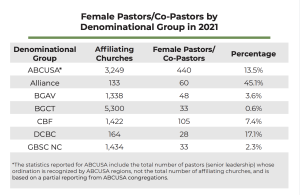 “Each ordination, calling, installation and positive experience of a Baptist woman in ministry represented in this report is cause for celebration,” BWIM Executive Director Meredith Stone said. “But Baptist women deserve safe places where they are affirmed, respected and empowered for ministry. Unfortunately, this report reveals that there is still much work to do for an equitable Baptist world for women to become a reality.”
“Each ordination, calling, installation and positive experience of a Baptist woman in ministry represented in this report is cause for celebration,” BWIM Executive Director Meredith Stone said. “But Baptist women deserve safe places where they are affirmed, respected and empowered for ministry. Unfortunately, this report reveals that there is still much work to do for an equitable Baptist world for women to become a reality.”
BWIM added that the project “captures the complex experiences carried by women in ministry today with recognition that women are not monolithic and women’s personal experiences in ministry have ebbed and flowed over the years in incredibly complex ways.”
That complexity is evident in statistics about women in ministry leadership positions, including BWIM’s finding that the number of female Baptist pastors and co-pastors increased from 174 in 2015 to 272 in 2021.
By denominational group, the American Baptist Churches in the USA, with 440, and the Cooperative Baptist Fellowship, with 105, lead the pack in 2021 in terms of most women pastors and co-pastors, according to the report. They were followed by the Alliance of Baptists (60), the Baptist General Association of Virginia (48), the Baptist General Convention of Texas (33), the General Baptist State Convention of North Carolina (33) and the D.C. Baptist Convention (28).
But growth is very slow
While a positive development, the numbers don’t tell the whole story, BWIM said. “For most denominational bodies, the increase in percentage was very small, indicating that while Baptists are making progress, the progress in the last six years has been minimal.”
BWIM noted that the Alliance has maintained the highest percentage (45.1%) of congregations led by women pastors or co-pastors, although its total number did not change from 2015 to 2016.
The survey also reported that while the percentage of CBF congregations with women pastors and co-pastors rose to 7.4% in 2021, the increase was due to a decline in total affiliating churches. The Fellowship’s 105 figure is down from 117 in 2015.
“There is far too much space between the convictions we profess and the reality that exists in our Fellowship.”
“That is neither acceptable nor an expression of the faith we profess,” CBF Executive Coordinator Paul Baxley said in comments included in the report. “This year’s report on The State of Women in Baptist Life makes it incredibly clear that there is far too much space between the convictions we profess and the reality that exists in our Fellowship.”

Paul Baxley
Baxley said CBF will work closely with BWIM to inspire churches to call women to ministry, adding there are numerous candidates in the pipeline. “About half the students in our theological schools today are women, and there are growing numbers of women serving in other positions on church staffs.”
Obstacles are like boulders
But much work remains to be done to change attitudes among clergy and congregations about the valuable role of female clergy, the report continued.
“The obstacles that women in ministry face often feel like the size of boulders. Some women are told that they cannot serve in ministry because of their gender. Other times they are encouraged theoretically in their calls to ministry and supported to serve in another church but told repeatedly that they cannot minister here.”
The report included numerous comments from female ministers about their experiences.
“I have felt the call to preach, but I don’t have support in my local fellowship. … I know I am called, but I feel lost and unsupported and often completely disregarded,” a former youth minister said.
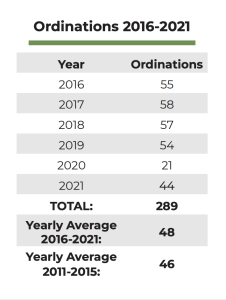 The survey also reported that 21% of Baptist women in ministry have been asked inappropriate questions about family planning in interviews and other settings, and 28% have been asked inappropriate questions about their dating lives.
The survey also reported that 21% of Baptist women in ministry have been asked inappropriate questions about family planning in interviews and other settings, and 28% have been asked inappropriate questions about their dating lives.
Additionally, 30% said they were given ministerial titles different from male counterparts, 49% reported being paid less than male clergy and 72% said they have had to provide more evidence of competence than male ministers.
Among those surveyed, 57% said men get credit for their ideas, 67% said men interrupt or talk over them and 45% have been patronized by peers or church members. “After my first sermon, a congregant asked my husband if he wrote my sermon,” one minister said.
“In light of the statistics about obstacles that women continue to encounter in ministry, there seems to be a disconnect between how well Baptists think they are supporting women in ministry and the reality of women’s experiences in their settings,” BWIM said in the report.
As a result, comments on the survey often reflected considerations or decisions to leave for other Christian traditions.
“While I still identify with my Baptist roots, I decided to move toward service in another denomination where I would be invited to serve as pastor and use the gifts I was given. I miss my connections with Baptist churches, but do not feel there is a place for me,” a pastor told BWIM.
Greater challenges for women of color
The survey also found that women of color in ministry have felt the challenge even more than white women. When asked if their leadership is perceived as controlling, angry or unlikeable, 65% of women of color said yes compared to 46% of white female clergy.
Likewise, 62% of women of color said their work contributions are ignored, compared to 44% of white female clergy. And when asked if people comment on their emotional states, 46% of women of color said yes versus 38% of white women.
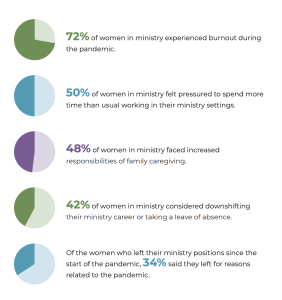 BWIM found these disparities continued during the COVID-19 pandemic when 35% of women of color reported inadequate access to mental health care resources, while only 24% of white women said the same.
BWIM found these disparities continued during the COVID-19 pandemic when 35% of women of color reported inadequate access to mental health care resources, while only 24% of white women said the same.
Lingering effects of pandemic
The BWIM report includes an entire section exploring the impact of the pandemic on Baptist women in ministry. It found that 72% experienced burnout, 48% faced more responsibilities at home and 50% felt pressured to spend more time in ministry. Another 42% said they considered “downshifting their ministry” or taking a leave of absence, and 34% actually left ministry due to the pandemic.
The pandemic, according to the report, “could set the progress of women’s representation in the workplace back half a decade, after many women left work due in part to burnout and increased caregiving responsibilities.”
BWIM concluded that there is much to cheer despite the roles of the pandemic, the continued decline of Baptist institutions and the gap between belief and practice contributing to the difficulties women face in ministry.
“There is cause for celebration about the trends of overall growth of women in ministry in the 2021 report. There is also a deep need for Baptists to reimagine the ways churches, institutions and our own attitudes toward women can develop into more expansive methods of growing support for women in ministry.”
Related articles:
Women in ministry: Strategically silent? | Analysis by Melody Maxwell
Women need more than your affirmation | Opinion by Laura Ellis
White evangelical leaders who repress women are revered as saints, author says
The untold story of Black women leaders in the Civil Rights Movement | Opinion by Marvin McMickle
Book traces the complex story of women’s influence within Southern Baptist Convention

